Thule T2 Pro XTR
Test Location: Colorado & Utah
Test Duration: 2 seasons
Mounted to: 2024 Subaru Outback Wilderness
Blister’s Measured Weight: 54 lb (24.5 kg)
MSRP: $899.95
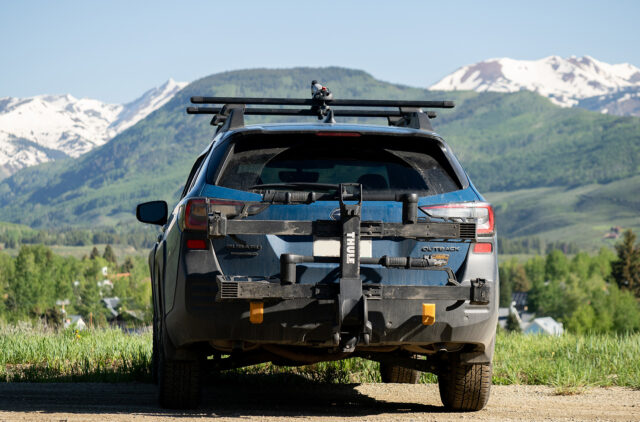
Intro
The T2 Pro XTR is Thule’s high-end tray-style hitch rack, and upon first look, it has a mostly simple and familiar design. But the T2 Pro XTR also incorporates some novel features over other similar racks, and T2 variants of old. I’ve been using this rack for two seasons now, so let’s get into the details.
Design, Features & Impressions
The T2 Pro XTR is a two-bike, tray-style, hitch-mount rack with two swinging arms that hold each bike by the front tire, as well as a sliding buckle system to secure the rear wheel. This sort of design has long been popular since it contacts the bike by its tires and rims, avoiding any scratching or scuffing on the frame or fork of the bike. The two bike trays can also be slid in either direction by loosening the bolts and retightening where you find the least amount of interference between the two bikes — a useful feature, especially for those who are typically loading the same two bikes onto their rack.
Thule claims the T2 Pro XTR is compatible with 20” to 29” wheel sizes and tires up to 5” wide. I’ve used bikes with tires up to a 2.6’’ wide 29er, and the T2 Pro XTR accommodated them with no issues whatsoever. Interestingly, Thule says the T2 Pro XTR can fit bikes with wheelbases up to 1270 mm, which isn’t very long by today’s geometry standards, especially with larger sizes of downhill-oriented mountain bikes. It is worth noting, though, that I’ve used the T2 Pro XTR with bikes with slightly longer wheelbases, and it’s worked just fine.
The T2 Pro XTR is available in both a 2’’ hitch version and a 1.25’’ version. Both versions hold two bikes, up to 60 lb (27.2 kg) each. Plus, Thule sells the Thule T2 Pro XT Add-On to increase the rack’s capacity to four bikes. However, the add-on is only compatible with the 2” hitch T2 Pro XTR, and installing the add-on drops the per-bike weight limit to 40 lb (18.1 kg), which some e-bikes and even heavier mountain bikes can certainly exceed.
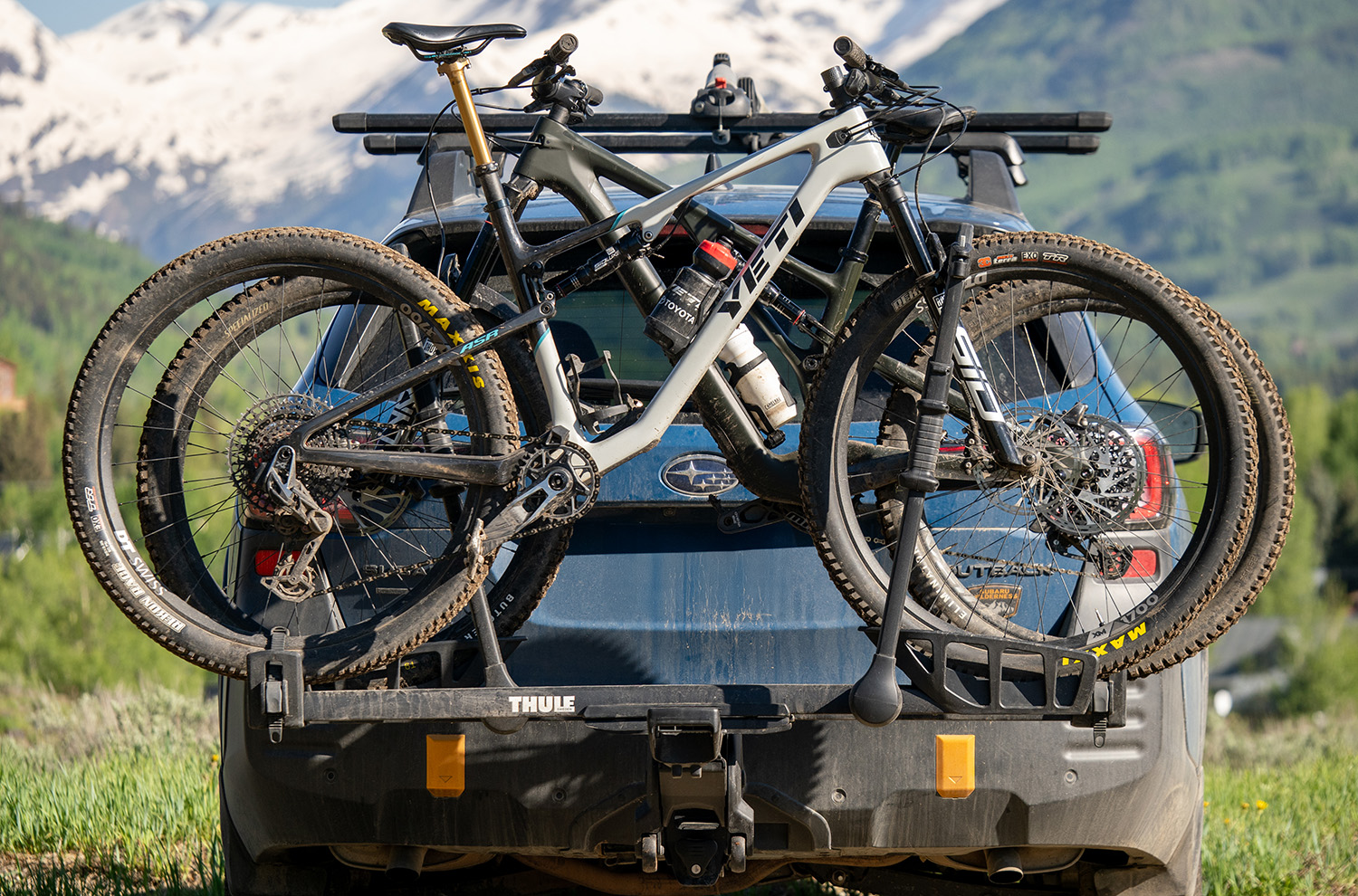
The frame of the rack, as well as the two trays, are made from steel. The trays that the bikes’ front wheels sit on and the sliding rear wheel attachments are made from plastic. Because of the large amount of metal in this rack, it weighs 54 pounds (24.5 kg). This is certainly not light, but it is worth mentioning that the Yakima StageTwo I tested a couple of years ago was a bit heavier at 61.6 lbs (27.9 kg). To help manage that weight when installing or removing the rack, Thule has integrated two roller wheels near the bottom of the T2 Pro XTR so that you can simply roll it on the ground. Thule also sells the T2 Pro XT, which drops the wheels from the T2 Pro XTR, but is otherwise identical (I guess “R” stands for “rolling”?). It’s also worth noting that Thule states this rack is intended for use “off-road, such as gravel roads, forest service roads, and access roads.”

Securing bikes on the T2 Pro XTR is quite straightforward. Simply place a bike in the tray, swing the front arm up and over the front wheel, and push it down, where it clicks in place. The bike is now completely supported, and you can walk around to the rear wheel where you can thread the straps over your rear wheel’s rim and into a buckle, ratcheting the buckle down as tight as you’d like. This does mean that the bike is almost entirely supported via the front wheel, but I had no issues with stability here.
To remove the bike, release the rear wheel strap from the buckle by pressing down on the ratchet buckle, then squeeze a button on the front arms, lift the hook that secures the wheel, and swing the arm out of the way. Sometimes, it requires a lot of pressure to release the rear wheel buckles, but I never failed to do so — it was just a two-handed job when I really cranked down on the ratchet. It’s also worth mentioning that over time, the teeth on both plastic ratchets chipped and wore down appreciably. But, this was on just one of the many teeth, leaving the ratchet still functional, just “skipping” on the strap when I was very forceful, and the one worn tooth was positioned to be doing most of the pulling on the strap.
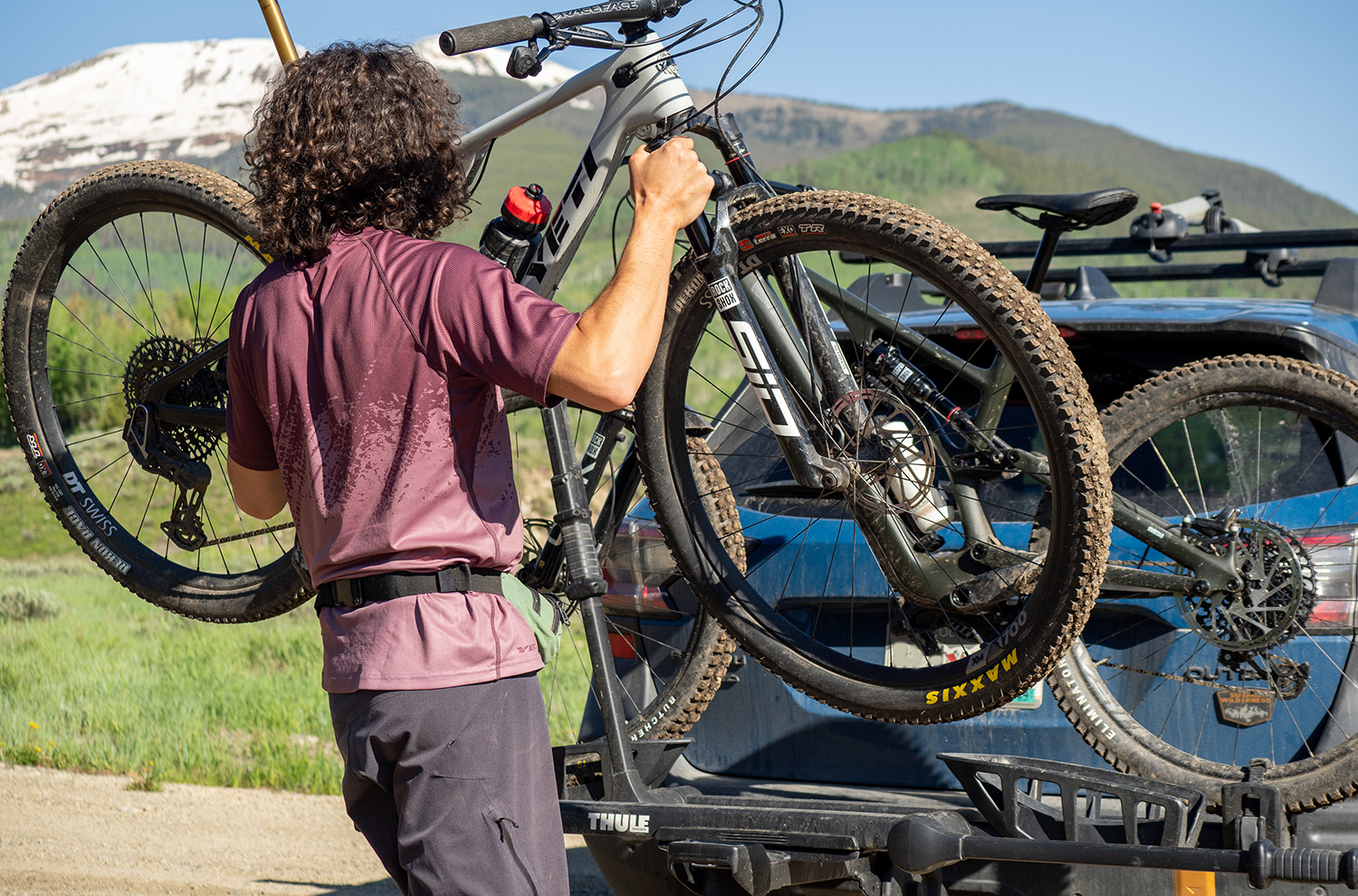

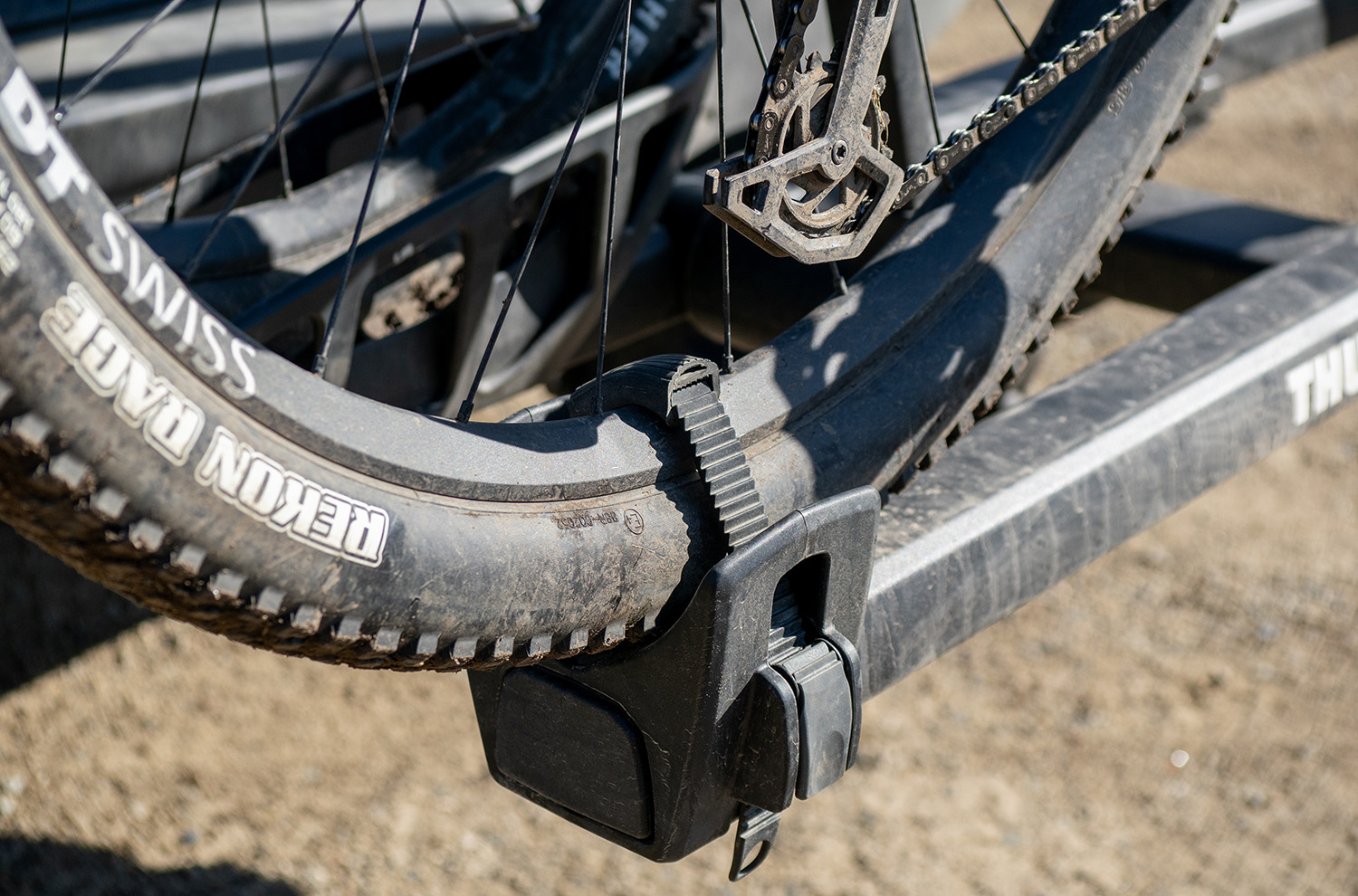
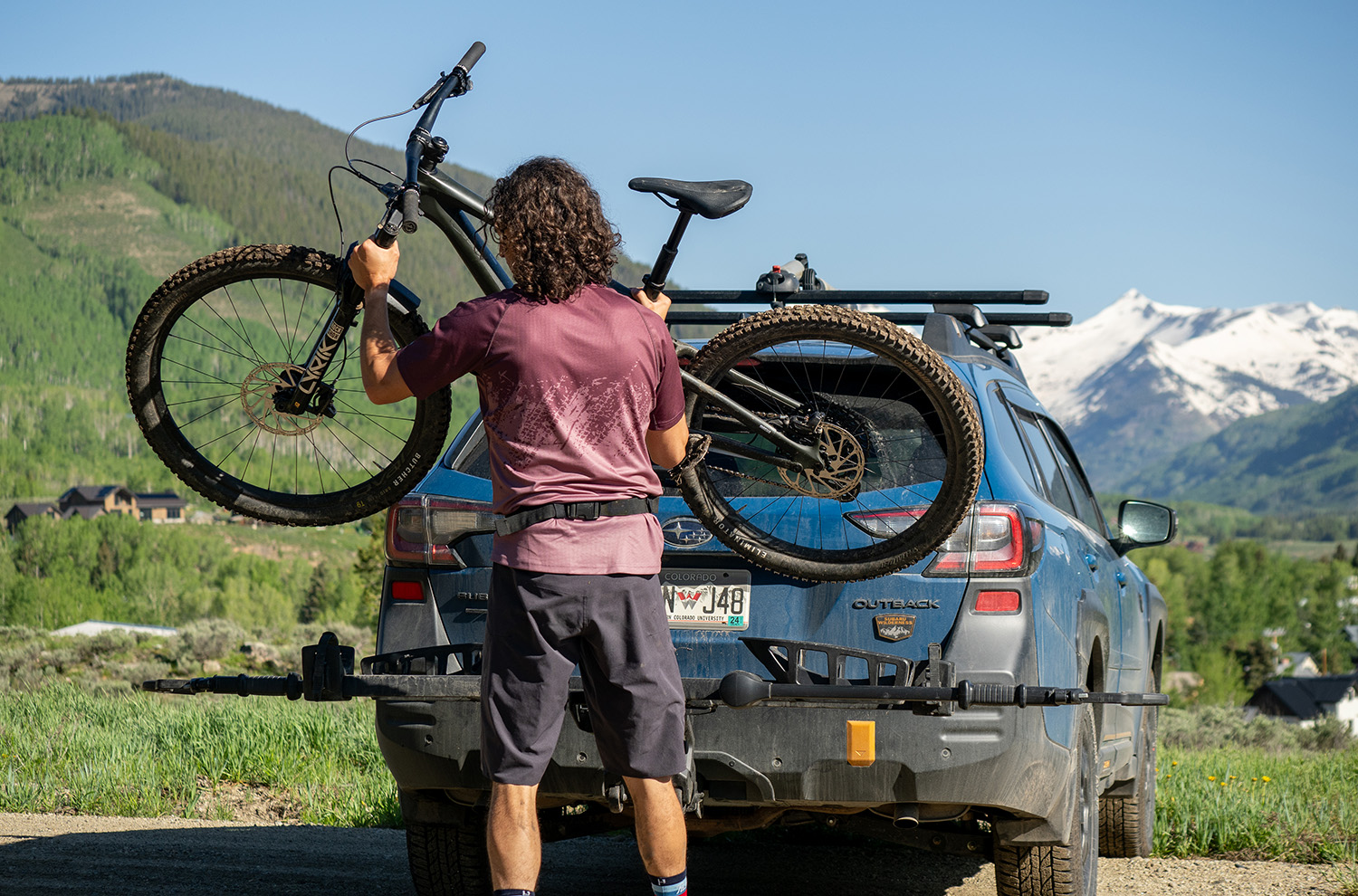
Another noteworthy feature of the T2 Pro XTR is the integrated locks. While they are pretty short, only able to capture the fork and front wheel, these locks are easy to use and tuck into the swinging arms very cleanly. I wouldn’t trust them to withstand a strong pair of bolt cutters, but since most bike locks act as a deterrent rather than a truly theft-proof option anyway, I think they’re mostly adequate. If I’m ever away from my bikes for more than 15 minutes or so, I’ll attach a stronger lock through the frames and secure it to a couple of metal loops on the T2 Pro XTR that are close to where the rack attaches to the vehicle.
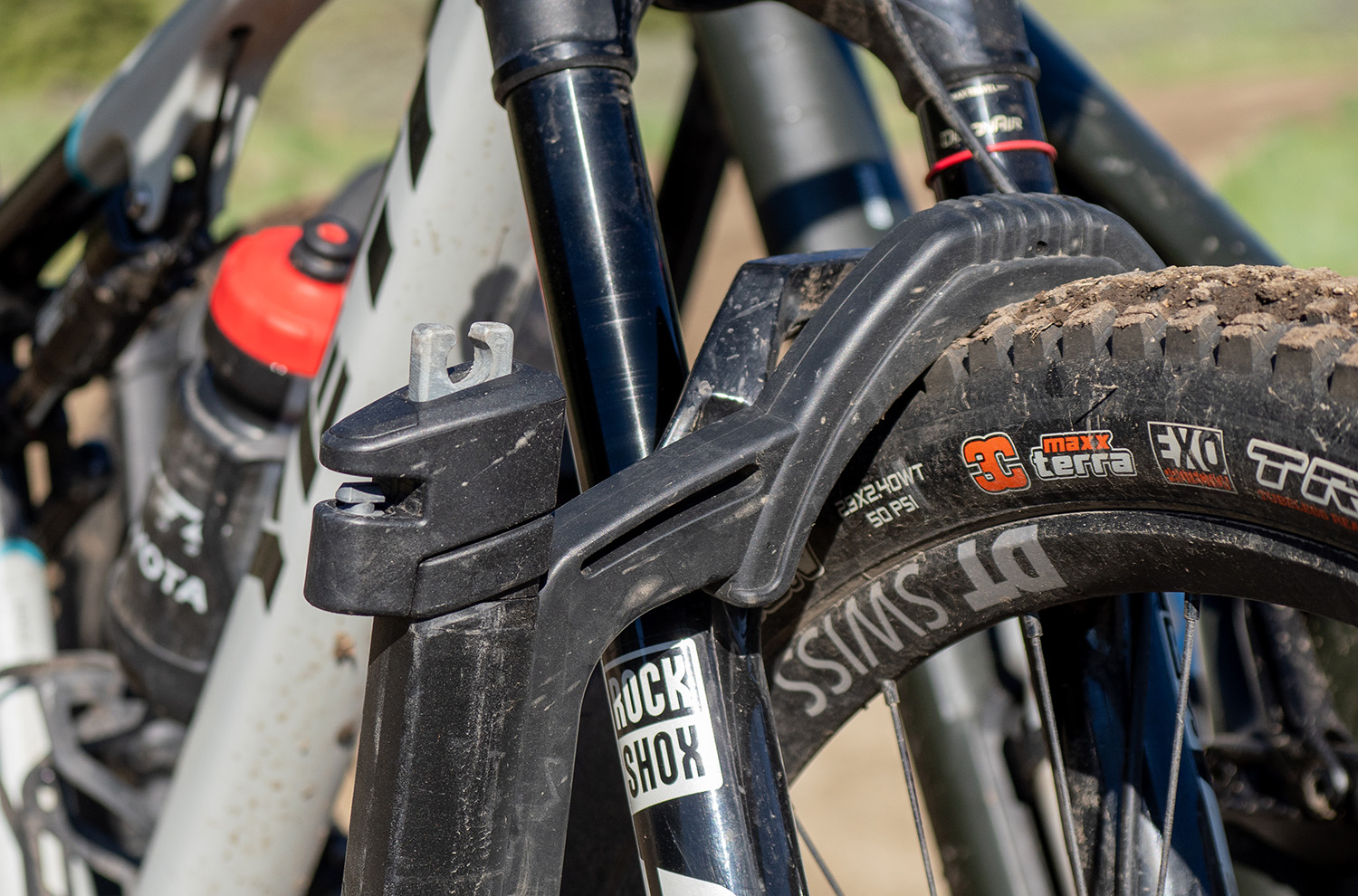
The T2 Pro XTR also locks to the vehicle via Thule’s “AutoAttach” system, which is essentially a knob that makes it easy to tighten the rack into the hitch receiver, eliminating play. The AutoAttach can be “locked” by using the same key as the integrated bike locks. “Locking” the AutoAttach just basically disconnects the knob from the actual tightening system inside the hitch, making it so it cannot be loosened. The T2 Pro XTR also has a swinging hook that aligns the rack within your hitch, also acting as another point of security. I found it best to wobble the rack in all directions when tightening the AutoAttach, as this resulted in less play in the system. I also like to retighten this system every month or so, as a very small amount of play tends to develop after dozens of miles on washboarded dirt roads.
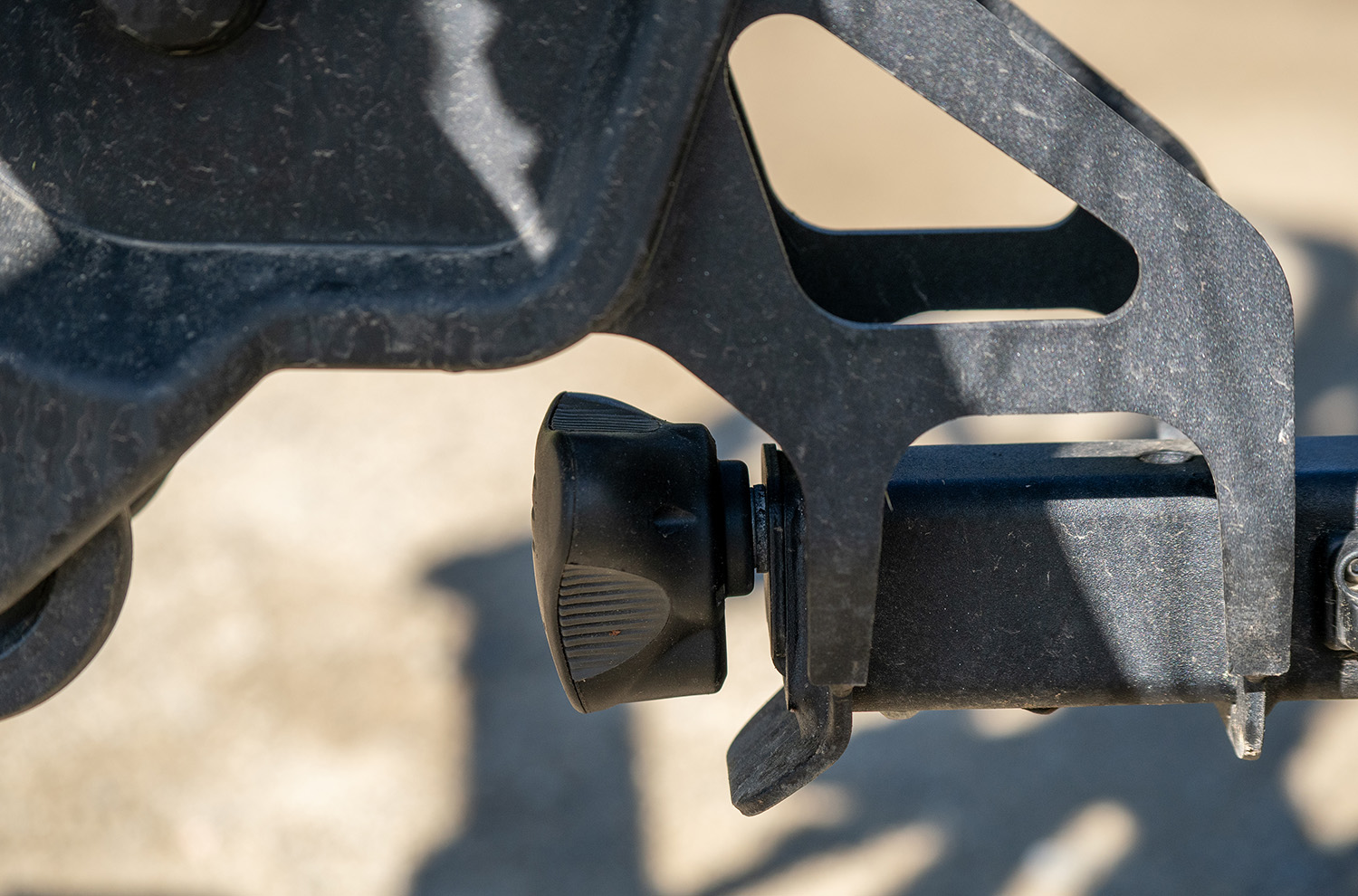
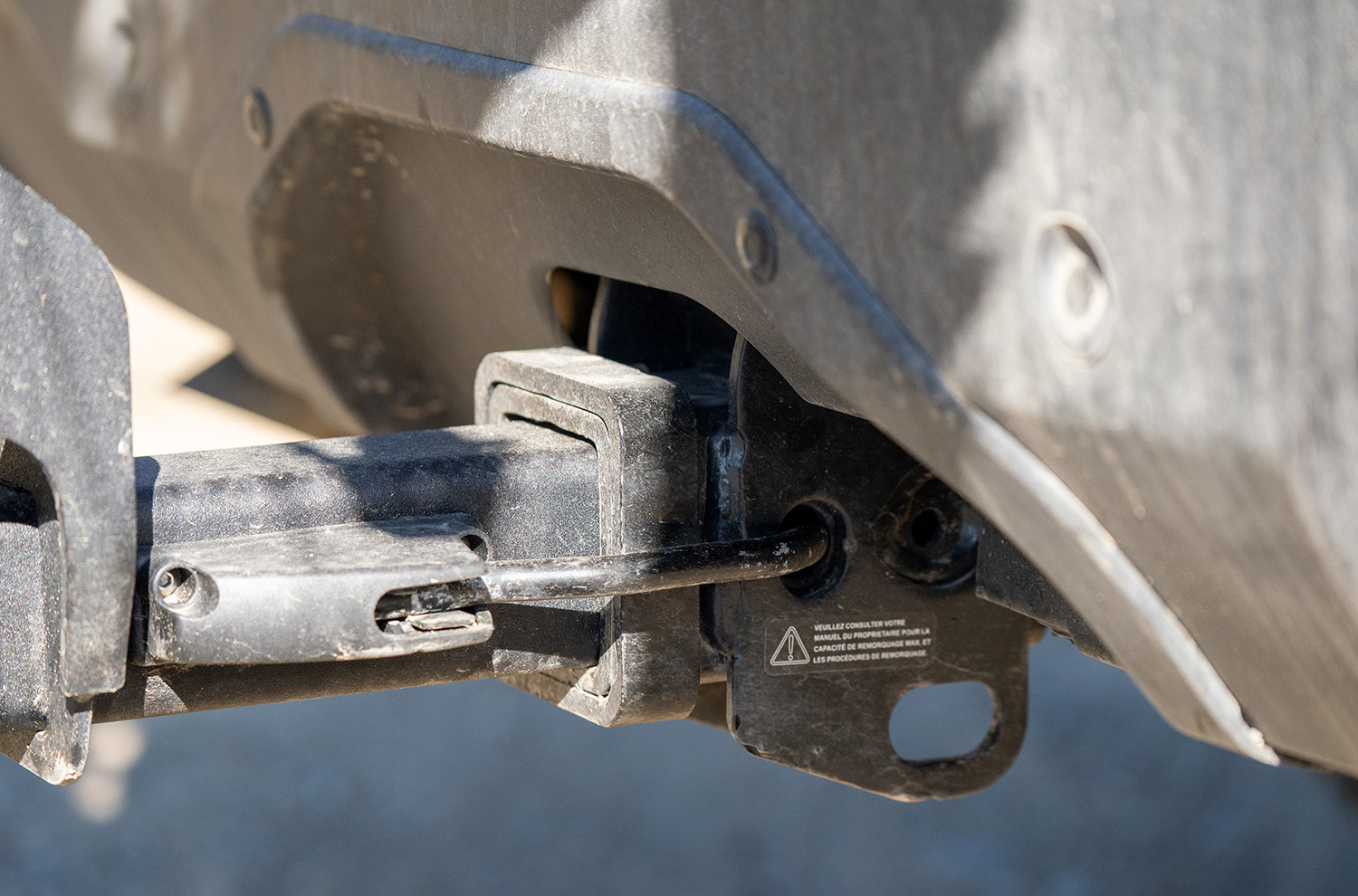
Additionally, the T2 Pro XTR can be tilted vertically when not in use. This rack can also be tilted down away from the car so that the rear trunk can be opened even with both bikes loaded on the rack. All of this is done via a handle on the very end of the rack body, making it quite accessible at all times. Sometimes, it requires a little bit of wiggling the rack up and down to release this handle, but it’s easy to squeeze when you find its sweet spot.
And finally, Thule offers a limited lifetime warranty for the original buyer on the T2 Pro XTR.

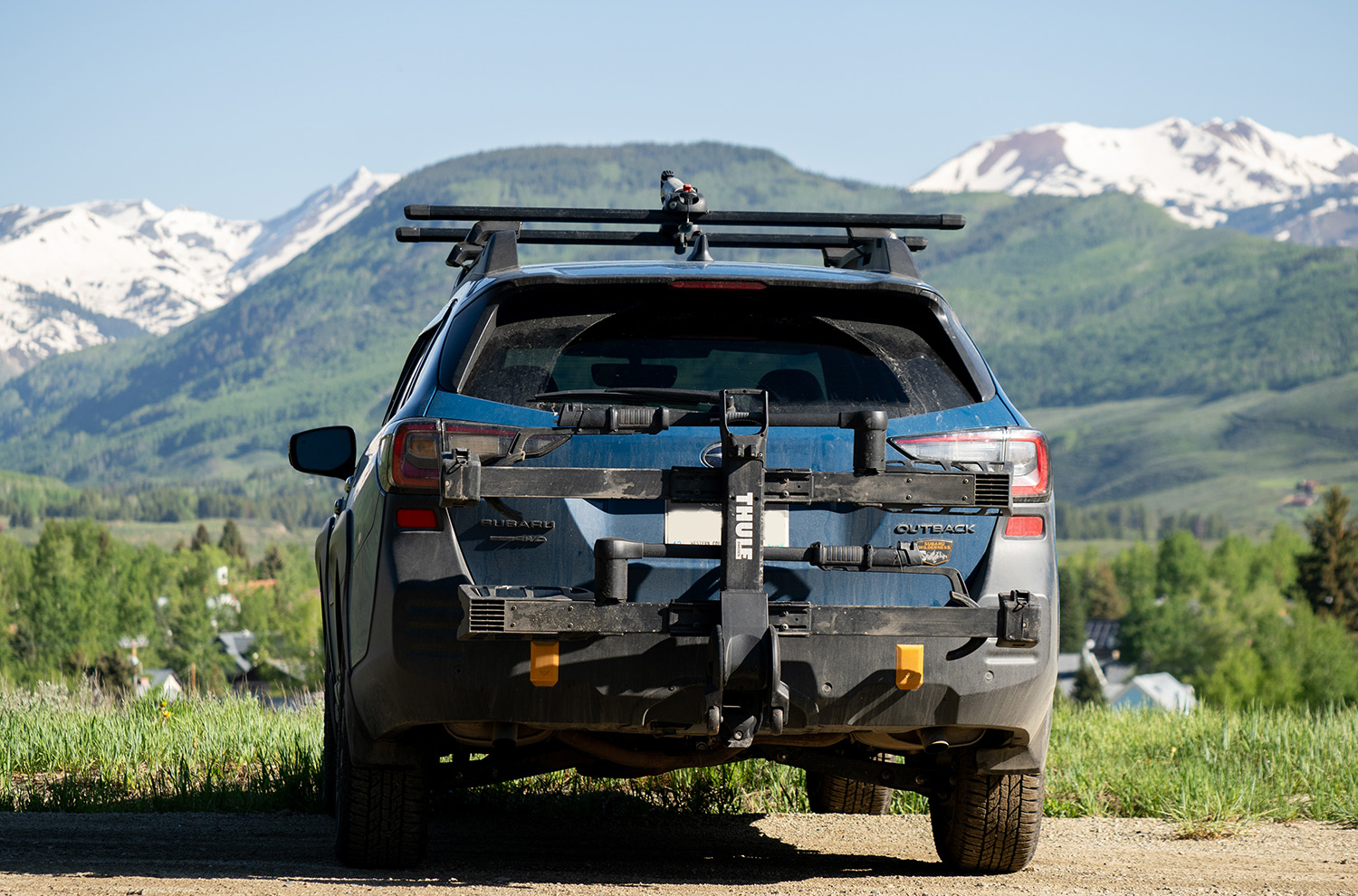
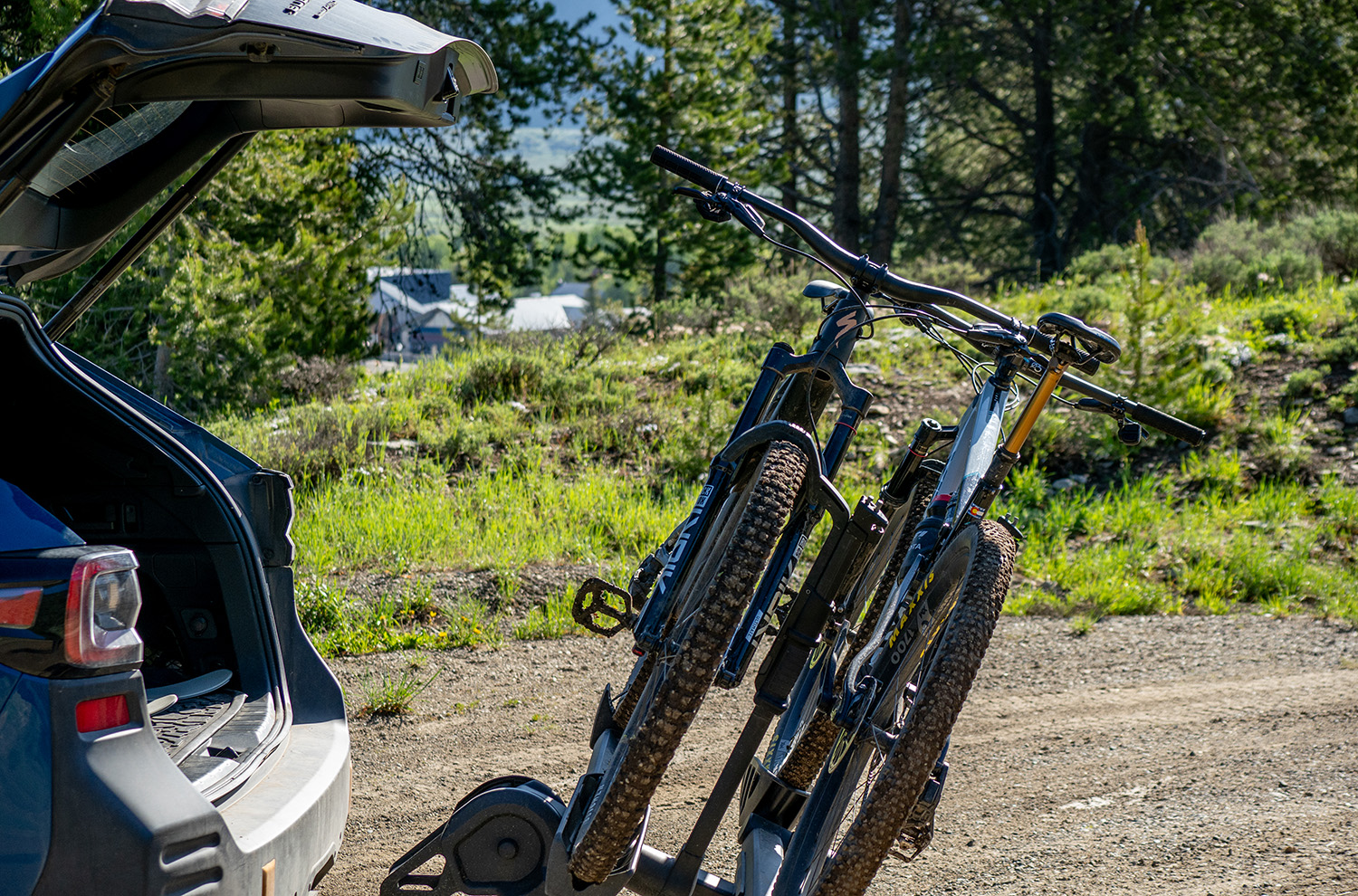
Thule T2 Pro XTR vs. Yakima StageTwo
When comparing these two bike racks from arguably the two biggest brands in vehicle racks, it can be hard to decide which one to go with. They both have very similar designs, and both fall in the same price range. I have identified a few key differences that should facilitate an easier decision for most people.
One major difference is the tiered design of the StageTwo compared to the flat design of the T2 Pro. On the StageTwo, the rearmost bike sits a bit higher than the one closer to the vehicle. I’ve found that this design naturally results in no interference between two bikes on the StageTwo. You can adjust the trays on the Thule T2 Pro to reduce interference between two bikes, but not every bike is the same, and one position that results in no handlebars contacting saddles on two bikes might not be the same position for two other bikes. So, for folks who mostly use the same two bikes on their bike rack, the T2 should be just fine. But, for those who are always loading a different combination of bikes onto their rack, the StageTwo will likely result in less interference over all combinations.
Another major difference is how much easier the T2 Pro XTR is to take on and off your car. I often go on long drives without bikes during the summer, and it can be nice to remove my bike rack for easier hatch access and the ability to turn my backup sensor on without it constantly beeping. Not only is the T2 Pro XTR 7.6 pounds (3.5 kg) lighter than the StageTwo, but the wheels on the underside of the rack make the T2 Pro XTR significantly easier to move around when off the car, even on dirt. For folks who mostly just leave their bike rack on their car and forget about it, this feature likely isn’t a factor. But if you often need to remove and reinstall your bike rack, the T2 Pro XTR does have an edge in convenience here.
It’s worth mentioning that I reviewed the previous version of the StageTwo. We just received the newest StageTwo for long-term review, and the two versions of this rack appear very similar so far. Yakima updated the “SpeedKnob,” the device that removes play and locks the rack to the vehicle, claiming that the new one is easier to use, and it does appear that it has better ground clearance than the earlier SpeedKnob, too. Additionally, the new StageTwo ups the carrying capacity to 70 lbs (31.8 kg) per bike, 10 lbs (4.5 kg) more than the previous StageTwo, as well as the current T2 Pro (though, when using in combination with the StageTwo +2 Add-On, the per-bike weight limit remains 40 lbs [18.1 kg]).

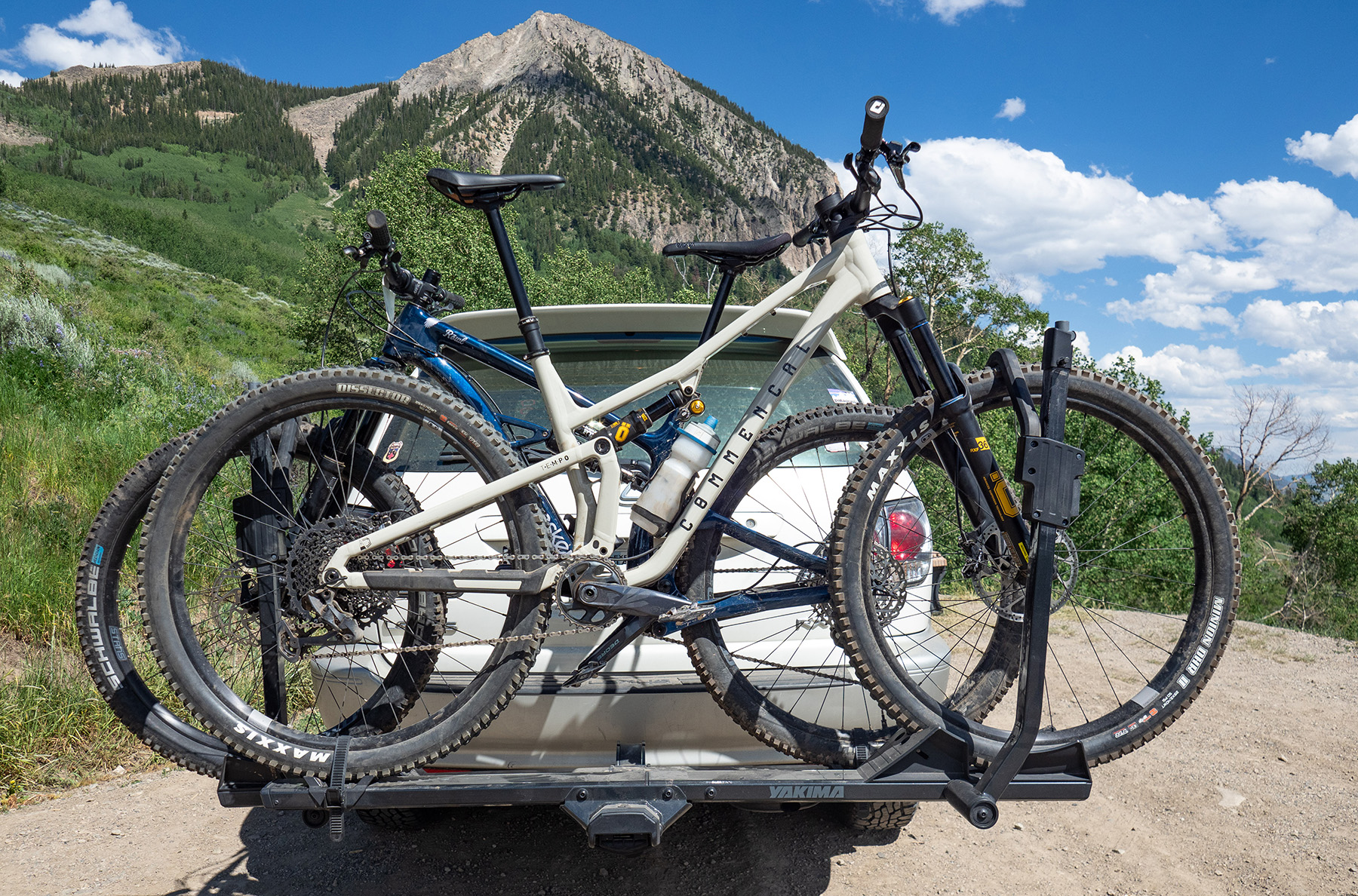
Bottom Line
The T2 Pro XTR has been very user-friendly, secure, and convenient. I don’t have to think or worry about my bikes on the back of my car when using this rack, trusting this rack’s durable and burly design. Plus, the T2 Pro XTR still allows access into the hatch of my car, with or without bikes loaded on it. And, for longer roadtrips, or when I am taking the rack off for the winter season, the wheels on the bottom of the rack make it extremely easy to remove and install.
